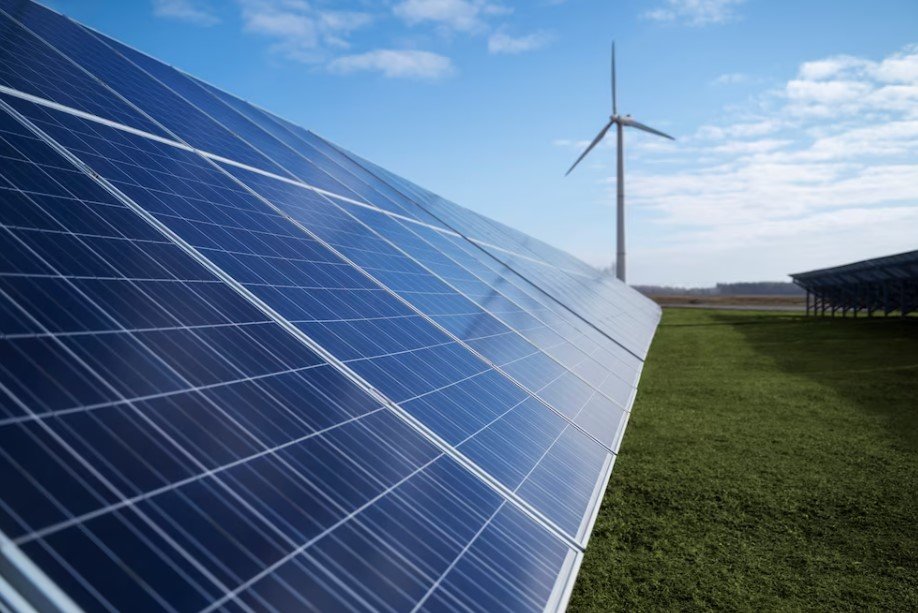Flying high in the sky has always captivated the human imagination. The dream of harnessing the power of the sun to propel aircraft has long been a subject of fascination. But is it possible to make solar-powered airplanes a reality & Can You Bring Solar Panels On A Plane? In this article, we delve into the realm of solar aviation to uncover the potential and challenges associated with this innovative concept.
The Solar-Powered Aircraft Concept: Shedding Light on the Possibilities
Solar-powered airplanes, as the name suggests, are aircraft that rely on solar energy to generate power for propulsion. These futuristic machines utilize solar panels mounted on their wings to convert sunlight into electrical energy. This energy is then used to drive electric motors, allowing the aircraft to sustain flight without relying on conventional fuel sources.
The Advantages of Solar-Powered Airplanes
Solar-powered airplanes hold several advantages over traditional aircraft powered by fossil fuels. Let’s take a closer look at some of these benefits:
- Renewable Energy: Solar power is an abundant and renewable energy source. By harnessing the sun’s rays, solar-powered airplanes can potentially achieve long-duration flights without depleting finite resources.
- Environmental Friendliness: Solar-powered airplanes produce zero direct emissions during flight. This reduces carbon footprint and helps mitigate the environmental impact of air travel, contributing to a greener future.
- Lower Operational Costs: Once solar-powered airplanes are built, the cost of fuel becomes negligible. This can lead to significant savings in operational costs, making air travel more accessible and affordable.
The Challenges Ahead: Overcoming the Obstacles
While the concept of solar-powered airplanes is promising, numerous challenges must be addressed before they can become a mainstream reality. Some of the key obstacles include:
- Limited Energy Conversion Efficiency: The efficiency of current solar panel technology poses a significant challenge. Converting sunlight into electricity is a complex process, and maximizing energy conversion efficiency remains a focal point for researchers and engineers.
- Weight and Space Constraints: Solar panels are bulky and heavy, which can impact the weight and balance of an aircraft. Finding innovative ways to integrate solar panels while maintaining aerodynamic performance is crucial.
- Nighttime and Inclement Weather: Solar-powered airplanes heavily rely on sunlight, making them less viable during nighttime and adverse weather conditions. Developing effective energy storage systems or hybrid propulsion methods can address this limitation.
Is it Possible to Make Solar-Powered Airplanes a Commercial Reality?
The question lingers: Can solar-powered airplanes truly take flight in the commercial aviation industry? While there have been notable advancements in solar aviation, there are still significant hurdles to overcome before we see solar-powered airplanes filling our skies on a regular basis.
Conclusion
In conclusion, the idea of solar-powered airplanes is a captivating concept that holds promise for a more sustainable future of air travel. While there are significant challenges to overcome, advancements in technology and ongoing research are pushing the boundaries of what is possible.
Solar-powered airplanes offer numerous benefits, including renewable energy usage, reduced environmental impact, and potential cost savings. However, limitations such as energy conversion efficiency, weight constraints, and weather dependency need to be addressed before solar-powered airplanes can become a common sight in our skies.
The dream of harnessing the power of the sun to propel airplanes is not a far-fetched notion. With continued innovation, collaboration, and investment, we may one day witness the realization of solar-powered airplanes as a viable and mainstream mode of air transportation.
Frequently Asked Questions (FAQs)
1. Can solar panels generate enough power to sustain flight?
Yes, solar panels can generate sufficient power to sustain flight, but current technology limits the efficiency of energy conversion. Ongoing research aims to improve solar panel efficiency and maximize energy output.
2. What happens when the sun sets or during cloudy weather?
Solar-powered airplanes face challenges during periods of low sunlight. Energy storage systems or alternative propulsion methods, such as hybrid systems, can be employed to overcome these limitations.
4. Are there any solar-powered airplanes currently in operation?
Yes, there have been successful demonstrations of solar-powered airplanes. The Solar Impulse project, for example, completed a historic flight around the world using only solar power. However, these are still experimental prototypes rather than commercial aircraft.
5. What are the potential applications of solar-powered airplanes?
Solar-powered airplanes have the potential for various applications, including environmental research, surveillance, telecommunications, and even passenger travel in specific scenarios. However, widespread commercial adoption is still a distant goal.
6. How long until we see solar-powered airplanes in mainstream use?
The timeline for the commercial use of solar-powered airplanes is uncertain. It depends on advancements in solar panel technology, energy storage systems, and the development of regulations and infrastructure to support solar aviation.


